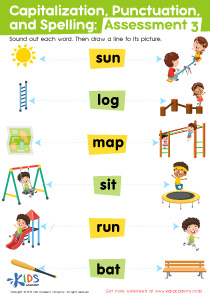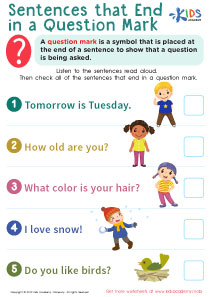Understanding plurals Writing Worksheets for Ages 4-9
6 filtered results
-
From - To
Explore our "Understanding Plurals Writing Worksheets" designed for children aged 4-9! These engaging worksheets help young learners grasp the concept of plurals through fun activities that promote comprehension and writing skills. With colorful illustrations and interactive exercises, kids will enjoy identifying singular and plural nouns, expanding their vocabulary while honing their writing abilities. Whether used in the classroom or at home, our worksheets aim to make learning about plurals enjoyable and effective. Strengthen your child's fundamental language skills and watch them gain confidence in their writing! Perfect for educators and parents looking for quality resources to boost literacy.
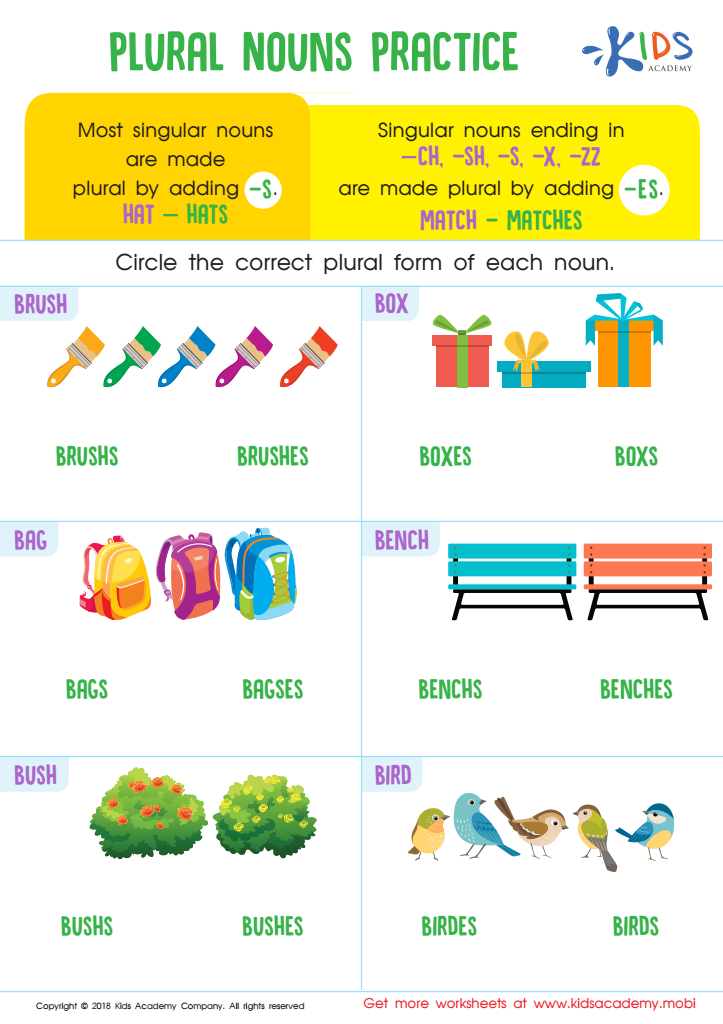

Plural Nouns Practice Worksheet


Plural Endings Maze Worksheet
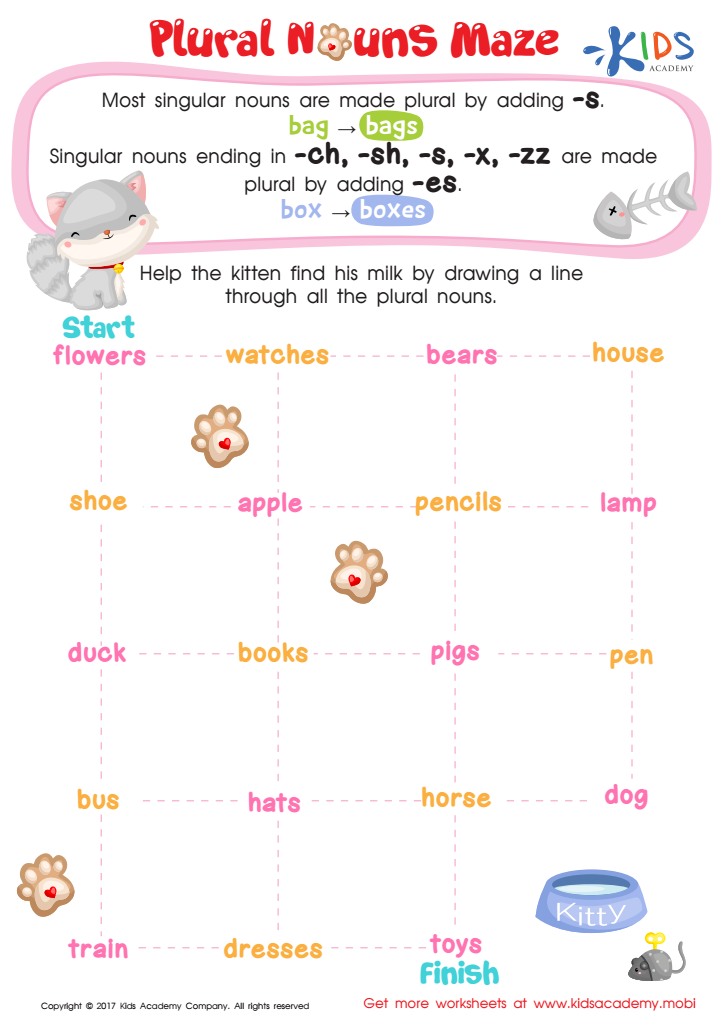

Plural Nouns Maze Worksheet
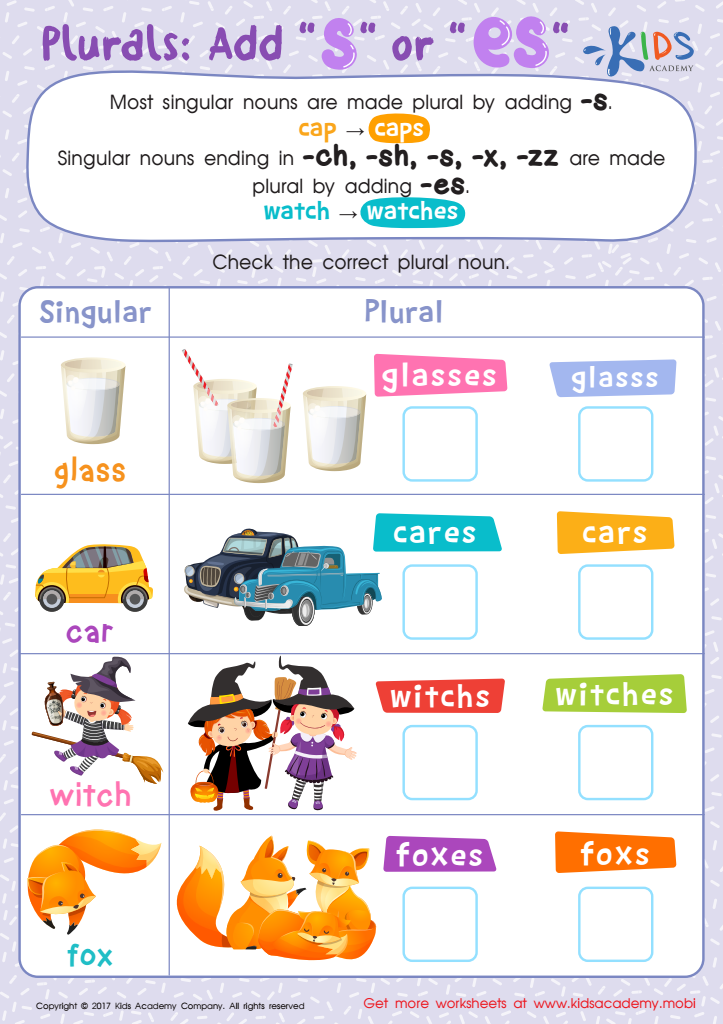

Plurals: "–es" or "–es"? Worksheet
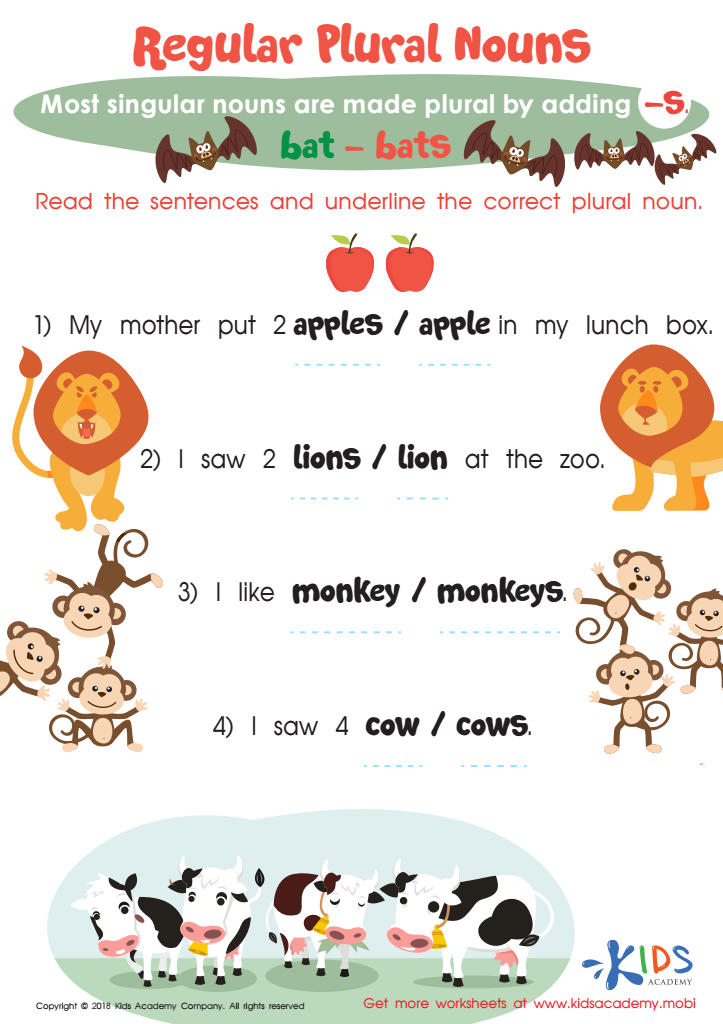

Regular Plural Nouns Worksheet


Make it Plural Worksheet
Understanding plurals is crucial for children aged 4-9 as it lays the foundation for their language and literacy development. At this stage, children are naturally curious about words and how they function, making it an ideal time to introduce plural forms. The ability to understand and use plurals supports vocabulary expansion, enhancing communication skills and enabling children to express ideas more clearly.
From a reading perspective, recognizing plurals helps children decode text more effectively, as many written materials contain both singular and plural nouns. By mastering plurals, young learners become more confident readers, equipped to engage with a wider range of texts. Furthermore, concepts of quantity and comparison become accessible through plurals, fostering mathematical thinking alongside language skills.
Teachers and parents play a pivotal role in this learning process. They can model plural usage, incorporate engaging activities like storytelling, and use visual aids to emphasize the differences between singular and plural forms. By encouraging this understanding early on, they empower children to articulate their thoughts accurately and engage in dialogues, setting the stage for successful communication in their academic journey and beyond. Ultimately, appreciating plurals enriches children's learning experiences, making language both fun and functional.
 Assign to My Students
Assign to My Students







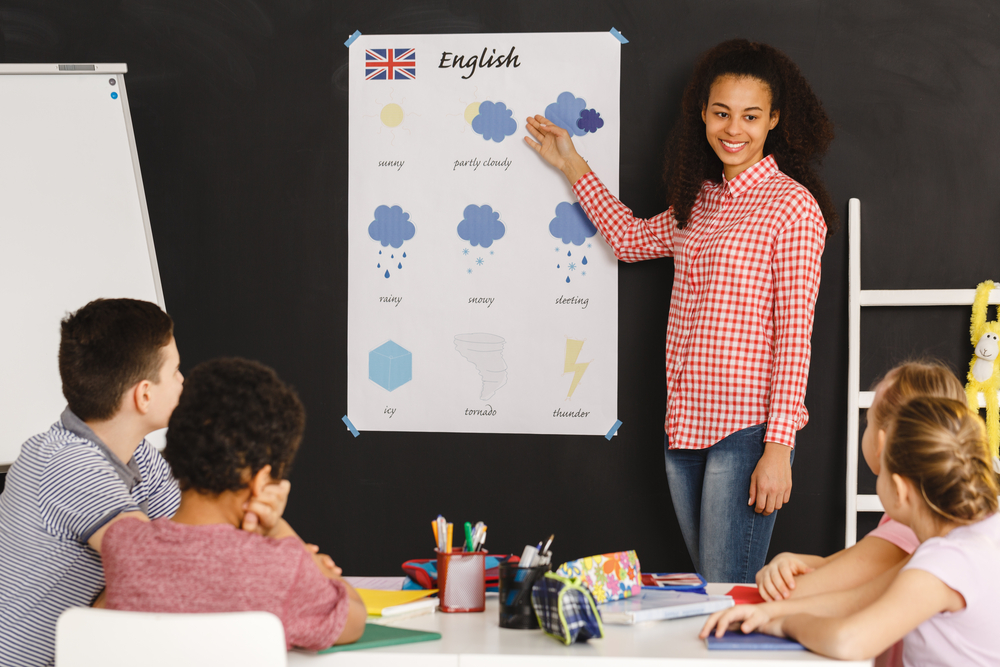

.jpg)
